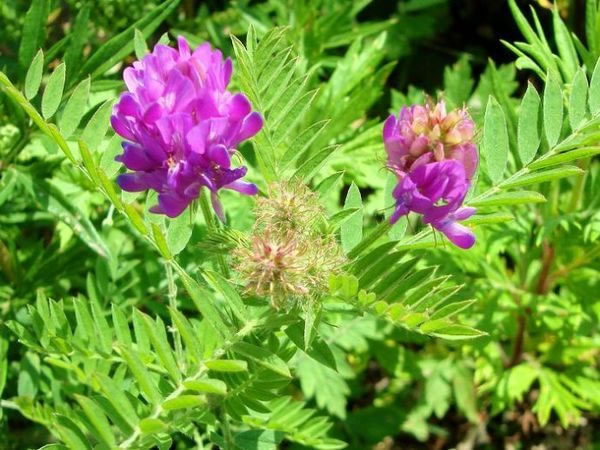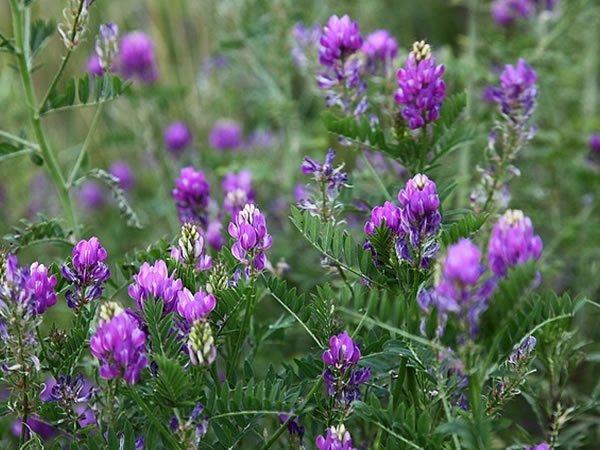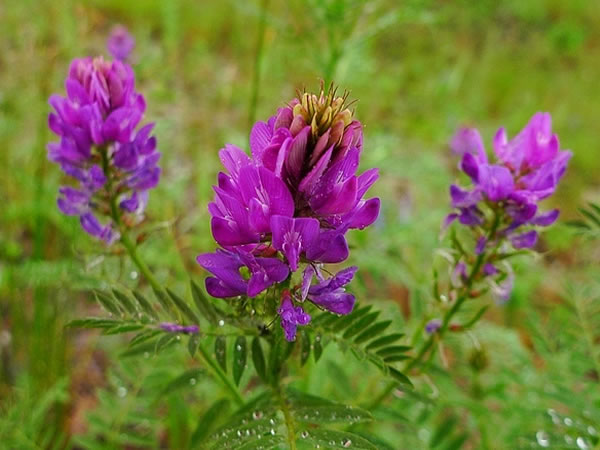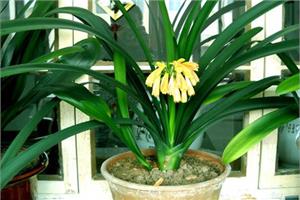Morphological characteristics of Astragalus dawuriensis efficacy and function of Astragalus dawuriensis
Dauri Huangqi is more common in the north, especially in areas where animal husbandry is developed. Dawuli Huangqi shows a stretching posture as a whole, the plant is relatively short, the flowers are purple, and the ornamental effect is good. Then Xiaoqi shared the morphological characteristics, efficacy and function of Astragalus membranaceus.

1. Morphological characteristics of Astragalus dawuriensis
Annual or biennial herbs of Astragalus davurica, spreading, white pilose. Stems erect, up to 80 cm tall, branched, finely angled. Leaves odd-pinnate have 11-19 (23) leaflets, 4-8 mm long; petiole less than 1 mm long; stipules separate, narrowly lanceolate or subulate, 4-8 mm long; leaflets oblong, Obovate-oblong or oblong-elliptic, 5-20 mm long and 2-6 mm wide, apex rounded or slightly acute, base obtuse or subcuneate, leaflet petiolule less than 1 mm long. Racemes dense, 10-20-flowered, 3.5-10 cm long; total pedicel 2-5 cm long; bracts linear or setose, 3-4.5 mm long. Pedicel 1-1.5 mm long; calyx obliquely campanulate, 5-5.5 mm long, calyx tube 1.5-2 mm long, calyx teeth linear or setose, upper 2 teeth shorter, lower 3 teeth longer (up to 4 mm) Corolla purple, upper petal subObovate, 12-14 mm long and 6-8 mm wide, apex emarginate, base broadly cuneate, wing ca. 10 mm long, limb curved-oblong, ca. 7 mm long, 1-1.4 mm wide, apex obtuse, base auriculate, petiole ca. 4.5 mm long; ovary stipitate, hairy, stalk ca. 1.5 mm. Clamped linear, 1.5-2.5 cm long and 2-2.5 mm wide
Apex protruding beak-shaped, erect. Inner curved, cross-veined, false 2-loculed, containing 20-30 seeds, fruit neck short, 1.5-2 mm long. Seeds pale brown or brown, reniform, 1 mm long, ca. 1.5 mm wide, spotted, smooth. The florescence is from July to September and the fruiting period is from August to October.

Second, the efficacy and function of Dauri Huangqi.
1. Dauri Huangqi is the food of many large livestock, especially donkeys, which is their favorite food. So Dauri Huangqi often appears as a kind of livestock feed in our daily life, and its vitality is strong, so it doesn't worry about being eaten, and it can continue to grow soon.
2. It would be a pity if all of Dawuli Astragalus membranaceus were used as a kind of feed. Dauri astragalus can not only be used as a main feed for livestock, but also can be eaten by us as a kind of traditional Chinese medicine. Because Dauri astragalus is a kind of plant with a bitter taste, the taste of eating is not very good, but it can clear away heat and detoxify, and it is very friendly to the fever in the human body.
3. Astragalus davurica can also improve the environment, because as a kind of plant, the vitality of wild is extremely strong, so it is very suitable for planting in the wild, which can be used to improve the quality of sandy soil. And Dawuli Huangqi itself is also more suitable for planting in hillsides and other places, which can effectively prevent land desertification, which is of great significance for us to protect the environment and ecological civilization.

The above is the introduction of the morphological characteristics, efficacy and function of Dawuli Huangqi. I hope the above content will be explained to you to better understand Dawuli Huangqi.
Recommended reading:
Morphological characteristics of Zizania latifolia ① efficacy and function of Zizania latifolia
The characteristics of Diandimei in the Daquan language of ②
Key points of cultivation of witch hazel in ③ Propagation methods of witch hazel
What is ④ rushes? planting methods of rushes
Morphological characteristics of ⑤ smelly tree peony culture method of smelly tree peony
- Prev

The maintenance method of gentleman orchid it takes patience to raise it well.
The maintenance method of gentleman orchid it takes patience to raise it well.
- Next

Pingpeng grass flower language means Pingpeng grass brief knowledge
Pingpeng grass flower language means Pingpeng grass brief knowledge
Related
- Wuhan Hospital Iron Tree Blooming Result Was Instantly Frightened by the Gardener Master
- Which variety of camellia is the most fragrant and best? Which one do you like best?
- What is the small blue coat, the breeding methods and matters needing attention of the succulent plant
- Dormancy time and maintenance management of succulent plants during dormancy
- Minas succulent how to raise, Minas succulent plant pictures
- What are the varieties of winter succulent plants
- How to raise succulent plants in twelve rolls? let's take a look at some experience of breeding twelve rolls.
- Attention should be paid to water control for succulent plants during dormant period (winter and summer)
- Watering experience of twelve rolls of succulent plants
- Techniques for fertilizing succulent plants. An article will let you know how to fertilize succulent plants.

